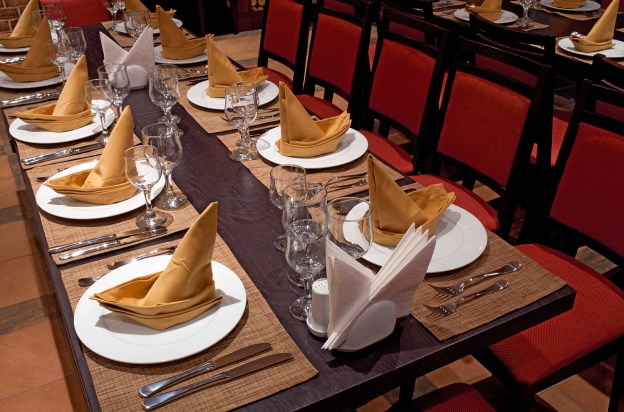 A common timeline of the modern day dining out experience includes making a reservation on OpenTable, arriving to the restaurant, consulting Foursquare for dish recommendations, Instagramming your plate, eating, leaving, and logging onto Yelp to review your experience. It’s a social cycle that is meant to help others formulate opinions of an unfamiliar restaurant, but the openness of these sites make the comments hard to judge. You can’t filter good reviews from paid endorsements, while bad reviews are often based off a petty, one-time experience.
A common timeline of the modern day dining out experience includes making a reservation on OpenTable, arriving to the restaurant, consulting Foursquare for dish recommendations, Instagramming your plate, eating, leaving, and logging onto Yelp to review your experience. It’s a social cycle that is meant to help others formulate opinions of an unfamiliar restaurant, but the openness of these sites make the comments hard to judge. You can’t filter good reviews from paid endorsements, while bad reviews are often based off a petty, one-time experience.
Beverly Hills restaurant Red Medicine is sick and tired of that crap. Social media has put power back into consumers’ hands but neglected to allow businesses to control their own Web presence or acknowledge that sometimes, customers, too, can be at fault. So it decided to change the way it’s been using social media this whole time.

Suddenly, the power has transformed into reverse Yelp. Restaurants like Red Medicine have realized they, too, can review customers who have wronged them.
“Most diners don’t realize the impact no shows make on a restaurant. Losing numerous prime tables, besides hurting a business, is not fair to the guests who take an earlier or later reservation than they wanted originally,” a Red Medicine representative tells me. “We understand emergencies happen, but most diners who no-show most likely don’t think twice about it. We’d like them to realize that one short call to cancel can make a big difference.”
We contacted a few OpenTable restaurants across the states to see if they agree with this tactic.
“On behalf of the owners of Nopa and Nopalito, I can speak with complete conviction in saying that this is not a practice that we would ever take on,” says Stephen Satterfield, representing the San Francisco restaurants. “As one who manages the social media here, the approach seems a little too petty and combative. We’d rather focus our energy on uplifting, educational, and more lighthearted content.”
Santos Uy, owner of LA’s Papilles Bistro, disagrees, comparing no-shows to being stood up. “A lot of people in LA are either ignorant about dining out or just have no respect for restaurants. Small places like us and Red Medicine that are destination spots that don’t rely on foot traffic … That lost table could’ve paid your labor cost for the day,” he told Los Angeles Times. “I applaud Red Medicine and I will be spending even more of my hard earned cash there.”
Other restaurants remained vague. “Here in Austin we use Twitter for peace, love, and rock and roll,” says Scott Walker, vice president of operations for Texas-based Congress.
“Whether people agree with our reaction, we hope that it brings attention to how all restaurants are impacted by no-shows,” Red Medicine says. The restaurant noted that the tweet ousting will not be an ongoing policy.
This isn’t the first example of how restaurants are beginning to take social media powers back into its hands; Earlier this year, several New York City restaurants imposed a ban on customers Instagramming their food, citing that flash photography affects the in-house dining experience. “We get on top of those folks right away or else it’s like a circus,” David Bouley of Bouley NYC told the New York Times.
With restaurants beginning to take social media on the offense, the trend leaves us wondering if now begins the era of hostile Internet-ing. If you reserve the right to complain about a business, businesses, too, will out you for your inconsiderate ways. Suddenly, the Web is no longer a helpful place for local recommendations, but a compilation of who not to mess with. It makes us think twice about the bitter taste we leave behind in something as small as a Yelp review.


